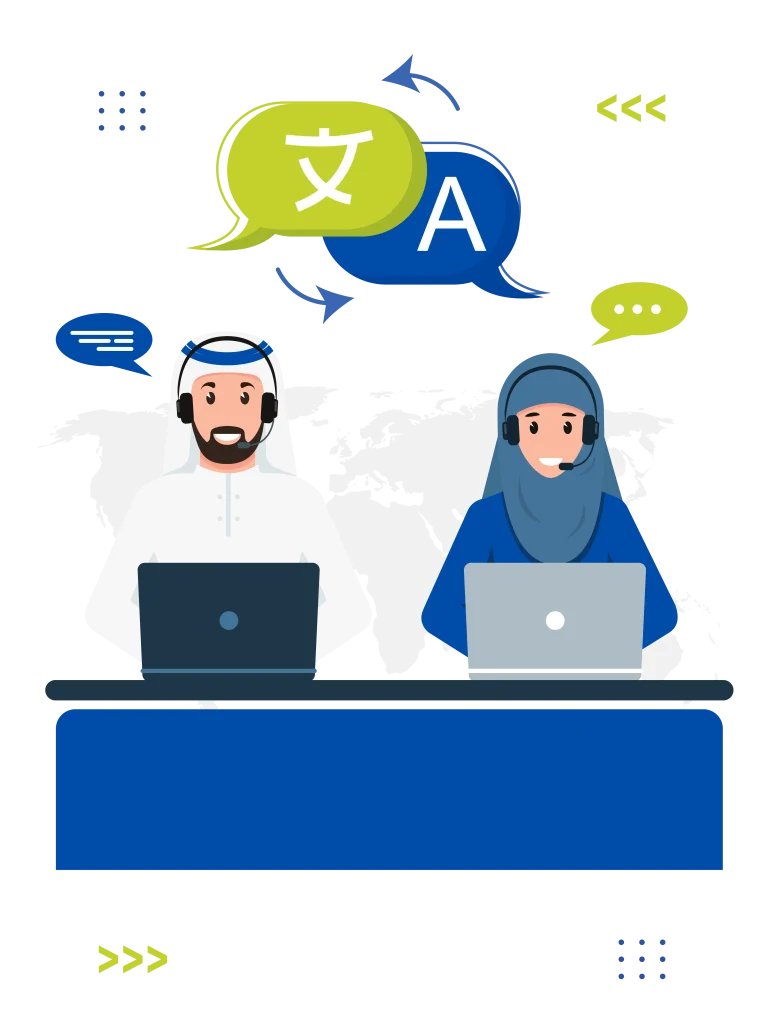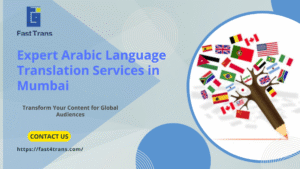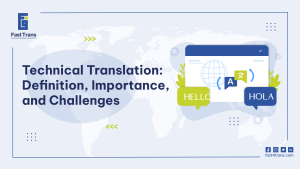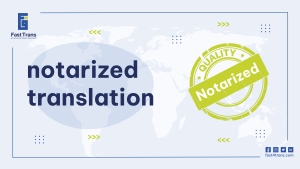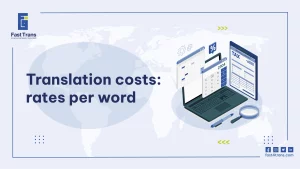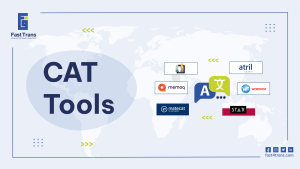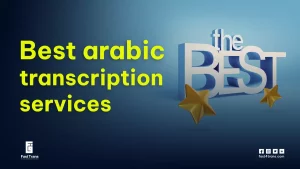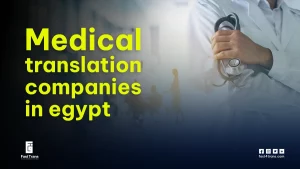Arabic localization in the Middle East involves more than translation—it’s an art of adapting content to resonate with the cultural and linguistic diversity of over 400 million Arabic speakers. With Modern Standard Arabic as the formal medium and distinct regional dialects like Levantine, Gulf, and Egyptian shaping daily interactions, localization requires precision and cultural insight.
Arabic’s unique right-to-left script, intricate grammar, and diacritical nuances demand expertise, while cultural elements such as symbolism, idioms, and color significance must align with regional sensitivities. Leveraging skilled native translators and RTL-compatible tools ensures that businesses effectively bridge cultural gaps, delivering experiences that truly connect with the Arabic-speaking world.
Facts about the Arabic language
Arabic, spoken by over 400 million people, is the official language of 22 nations and belongs to the Semitic language family. Known for its complex grammar and rich vocabulary, it has influenced many languages and remains key in global diplomacy, culture, and science.
1. Widely Spoken Language
Arabic is spoken by over 400 million people worldwide, making it the fifth most spoken language globally. It is the official language of 22 countries, predominantly in the Middle East and North Africa, including Egypt, Saudi Arabia, the United Arab Emirates, and Morocco.
2. A Semitic Language
Arabic belongs to the Semitic language family, which also includes Hebrew and Aramaic. This linguistic group is characterized by root-based word formations, where words are derived from a three-consonant root that conveys a core meaning.
3. Classical and Modern Arabic
Arabic exists in two primary forms: Classical Arabic and Modern Standard Arabic (MSA). Classical Arabic is the language of the Quran and classical literature, while MSA is used in formal communication, media, and education. Despite their differences, both forms share the same grammatical structure.
4. Dialects and Variations
Arabic has numerous dialects that vary widely by region. These dialects are often so distinct that speakers from different countries may struggle to understand each other. Examples include Egyptian Arabic, Levantine Arabic, Gulf Arabic, and Maghrebi Arabic. However, MSA serves as a unifying form for formal communication.
5. Rich Vocabulary
Arabic is known for its extensive and nuanced vocabulary. For example, there are over 100 words to describe a camel and numerous terms for “love,” each reflecting a different nuance or stage of emotion.
6. Unique Writing System
Arabic is written from right to left using a script with 28 letters. Its script is cursive, meaning the shape of the letters changes depending on their position in a word. Arabic also lacks capitalization, but its diacritical marks indicate vowel sounds, aiding pronunciation.
7. Language of Science and Culture
During the Islamic Golden Age (8th to 13th centuries), Arabic was the lingua franca of science, philosophy, medicine, and mathematics. Many classical texts from Greek, Persian, and Indian origins were translated into Arabic, preserving knowledge that later influenced the European Renaissance.
8. Influence on Other Languages
Arabic has contributed thousands of words to other languages, including English, Spanish, and French. Words like “coffee” (from qahwa), “algebra” (from al-jabr), and “sugar” (from sukkar) have Arabic origins, showcasing the language’s historical influence.
9. One of the Official UN Languages
Arabic is one of the six official languages of the United Nations. It plays a vital role in international diplomacy, business, and cultural exchange.
10. Learning Challenges and Beauty
Arabic is often considered one of the most challenging languages to learn due to its complex grammar, rich morphology, and varying dialects. However, its poetic nature and expressive power make it a rewarding language to master.
Arabic is not just a means of communication but a gateway to understanding a rich cultural and historical heritage that has shaped the modern world.
Most Widely Used Middle Eastern Languages
The Middle East is home to a rich linguistic diversity, with Arabic, Persian, and Turkish being the most widely spoken languages, serving as key communication mediums in their respective countries. These languages, along with others like Hebrew, Kurdish, and Armenian, reflect the region’s complex cultural and historical tapestry.
1. Arabic
Arabic is the most spoken language in the Middle East and serves as the official language of many countries, including Saudi Arabia, Egypt, Iraq, Jordan, and the United Arab Emirates. It is also the liturgical language of Islam, as the Quran is written in Arabic, making it significant to Muslims worldwide. Arabic has numerous dialects, such as Gulf Arabic, Levantine Arabic, and Egyptian Arabic, which vary significantly but share Modern Standard Arabic (MSA) as a common formal base for media and formal communication.
2. Persian (Farsi)
Persian, or Farsi, is primarily spoken in Iran, Afghanistan (where it is known as Dari), and parts of Tajikistan (as Tajik). Persian is an Indo-European language with a rich literary tradition that has influenced neighboring languages such as Urdu and Turkish. In the Middle East, Persian is especially prominent in Iran, where it serves as the national language and is used in government, education, and media.
3. Turkish
Turkish is the official language of Turkey and is also spoken in parts of Syria, Iraq, and Cyprus. As a member of the Turkic language family, it uses the Latin alphabet and has strong historical ties to the Ottoman Empire, which once spanned much of the Middle East. Turkish is known for its agglutinative grammar and unique vowel harmony, making it distinct among Middle Eastern languages.
4. Hebrew
Hebrew is the official language of Israel and is primarily spoken by the Jewish population in the Middle East. Revived in the 19th century as a modern spoken language, Hebrew is also the liturgical language of Judaism. Today, Modern Hebrew is used in daily life, education, and media, while Classical Hebrew remains the language of religious texts.
5. Kurdish
Kurdish is spoken by the Kurdish people, an ethnic group primarily located in Iraq, Iran, Turkey, and Syria. It has several dialects, including Kurmanji, Sorani, and Pehlewani, and is an Indo-Iranian language. In Iraq’s Kurdistan region, Kurdish is an official language alongside Arabic, reflecting the cultural and political importance of the Kurdish population.
6. Aramaic
Aramaic, one of the oldest continuously spoken languages in the world, has historical significance as the lingua franca of the ancient Near East. Today, it is spoken by smaller communities, primarily Assyrian Christians and some Jewish groups in Iraq, Syria, and Lebanon. While its usage has declined, Aramaic holds immense cultural and historical value.
7. Armenian
Armenian is spoken by the Armenian population in the Middle East, particularly in countries like Lebanon, Syria, and Iran. It is an Indo-European language with a unique script and a rich literary tradition. The Armenian diaspora in the Middle East has played a significant role in preserving the language and culture.
8. Assyrian (Neo-Aramaic)
Assyrian Neo-Aramaic is another language spoken by Assyrian Christians in Iraq, Syria, and surrounding areas. It is closely related to Aramaic and serves as a cultural marker for the Assyrian community, with efforts underway to preserve it amidst challenges of displacement and diaspora.
9. Greek
Although not as widely spoken today, Greek has historical roots in the Middle East due to the Hellenistic period and Byzantine Empire. Greek-speaking communities can still be found in parts of Cyprus and Turkey.
10. English
While not a native Middle Eastern language, English has become a widely used second language in the region due to globalization, education, and business needs. Countries like the UAE and Qatar have large expatriate populations, making English a key medium for communication.
Each of these languages contributes to the vibrant linguistic diversity of the Middle East, reflecting centuries of history, trade, migration, and cultural exchange.
Arabic forms and dialects
Arabic language encompasses various forms and dialects, including Classical Arabic, used for religious and literary purposes, and Modern Standard Arabic, employed in formal settings like media and education. Regional dialects, such as Levantine, Egyptian, and Gulf Arabic, reflect diverse local speech variations, creating a complex linguistic landscape.
1. Classical Arabic (الفصحى التراثية)
Classical Arabic is the language of the Qur’an and early Islamic texts. It is characterized by its intricate grammar, vocabulary, and poetic style. Although it is not used in everyday conversation, it holds immense cultural and religious significance. Classical Arabic is primarily studied for religious, historical, and literary purposes, and its rules are governed by classical grammar books like those of Sibawayh and Al-Farahidi.
2. Modern Standard Arabic (الفصحى الحديثة)
Modern Standard Arabic (MSA) is derived from Classical Arabic and serves as the standardized form of the language in contemporary settings. It is used in formal communication, including:
- Media: Newspapers, television broadcasts, and online platforms.
- Education: Teaching materials and academic discourse.
- Official Documents: Government records, contracts, and legal texts.
- Literature: Modern novels, essays, and poetry.
MSA simplifies some aspects of Classical Arabic grammar and vocabulary, making it more accessible to modern speakers. However, it is still not used as a native spoken language and often differs from the colloquial forms people use in daily life.
3. Colloquial Dialects (اللهجات العامية)
Arabic colloquial dialects are the spoken varieties of Arabic and vary significantly across the Arab world. These dialects are the native languages of Arabic speakers and are used in informal contexts such as daily conversations, television dramas, and social media. Here are the major groups of dialects:
a. Levantine Arabic (الشامية)
- Spoken in: Lebanon, Syria, Jordan, and Palestine.
- Features: Known for its melodic tone and moderate influence from Turkish and French.
- Example: “كيف حالك؟” (How are you?) becomes “كيفك؟” in Levantine Arabic.
b. Gulf Arabic (الخليجية)
- Spoken in: Saudi Arabia, the UAE, Qatar, Kuwait, Bahrain, and Oman.
- Features: Influenced by Bedouin Arabic and includes words borrowed from Persian and English.
- Example: “وينك؟” is a common way to say “Where are you?”
c. Egyptian Arabic (المصرية)
- Spoken in: Egypt.
- Features: The most widely understood dialect due to Egypt’s influence in media and cinema. It is known for its simplified grammar and unique pronunciation.
- Example: “ما اسمك؟” (What is your name?) becomes “اسمك إيه؟” in Egyptian Arabic.
d. Maghrebi Arabic (المغاربية)
- Spoken in: Morocco, Algeria, Tunisia, Libya, and Mauritania.
- Features: Heavily influenced by Berber, French, and Spanish, making it distinct and harder for Eastern Arabs to understand.
- Example: “What is your name?” is said as “شكون اسمك؟” in Moroccan Arabic.
e. Yemeni Arabic (اليمنية)
- Spoken in: Yemen and parts of southern Saudi Arabia.
- Features: Retains some archaic features of Classical Arabic and has a rich variety of sub-dialects.
- Example: “Where are you going?” becomes “وين رايح؟” in Yemeni Arabic.
f. Sudanese Arabic (السودانية)
- Spoken in: Sudan and parts of South Sudan.
- Features: Mixes Classical Arabic elements with Nubian and African language influences.
- Example: “كيف حالك؟” (How are you?) becomes “كيفنك؟” in Sudanese Arabic.
4. Diglossia in Arabic
Arabic speakers experience a linguistic phenomenon called diglossia, where they use both MSA and their local dialects in different contexts. For instance:
- MSA is used in formal speeches, news, and official correspondence.
- Dialects are used in daily conversations, casual settings, and entertainment.
5. Other Influences on Arabic
Arabic has been influenced by various languages over centuries, including Persian, Turkish, French, English, and Spanish. Similarly, Arabic has contributed many words to other languages, such as “algebra,” “sugar,” and “coffee.”
Why Understanding Diacritics Is Important for Arabic localization in the Middle East
Understanding diacritics in Arabic is crucial for precise communication in localization, as they clarify meanings and ensure accuracy across diverse dialects and regions. Diacritics also improve readability for non-native speakers, support modern technologies, and maintain cultural sensitivity, making them vital for high-quality, inclusive localization in the Middle East.
1. Clarifying Meaning and Reducing Ambiguity
Arabic words can have multiple meanings depending on how they are pronounced, which is guided by diacritics. For example, the word “كتب” could mean “wrote” (kataba), “books” (kutub), or “was written” (kutiba), depending on the diacritics used. For localization projects like software interfaces, product manuals, or educational materials, the wrong interpretation could lead to confusion or even offensive errors. Proper use of diacritics ensures the intended meaning is communicated accurately.
2. Enhancing Readability for Non-Native Speakers
While native Arabic speakers often rely on context to interpret text without diacritics, non-native speakers or language learners may find unvoweled Arabic difficult to understand. Diacritics serve as a guide for correct pronunciation and comprehension, making localized content more accessible to a wider audience. This is especially important in applications like educational tools, language learning apps, or tourism materials.
3. Ensuring Cultural and Religious Sensitivity
Arabic diacritics are integral to sacred texts like the Quran, where every diacritic impacts the pronunciation and meaning of the words. Misrepresentation or omission of diacritics in religious content can lead to significant cultural and spiritual errors. Localization teams working on religious or culturally significant materials must pay meticulous attention to diacritics to preserve respect and accuracy.
4. Maintaining Professional Standards in Localization
High-quality localization demands linguistic precision, especially when dealing with technical, legal, or medical texts. In such contexts, a misplaced diacritic could change the meaning of a term, leading to potentially serious misunderstandings. Understanding and applying diacritics accurately reflects professionalism and a commitment to quality in localization.
5. Supporting Speech Recognition and Natural Language Processing (NLP)
Modern technologies like voice assistants, speech-to-text applications, and AI-driven translation tools rely on accurate linguistic data. Including diacritics in Arabic datasets improves the performance of these technologies, ensuring better recognition and understanding of spoken and written Arabic. This is a growing area of importance in the localization community as the demand for AI-driven solutions increases.
6. Fostering Inclusivity Across Dialects and Regions
Arabic is a language with numerous dialects, and diacritics help bridge the gap between regional variations by standardizing pronunciation and meaning in Modern Standard Arabic (MSA). This standardization is vital for localization projects targeting diverse Arabic-speaking audiences across different countries.
Challenges in Arabic localization in the Middle East
Arabic localization in the Middle East faces challenges such as linguistic complexity with diverse dialects, cultural sensitivity to religious norms, technical issues with RTL formatting, market-specific regional variations, and limited resources for skilled translators. These obstacles demand tailored solutions for effective communication and user experience.
1. Linguistic Complexity
Middle Eastern languages, including Arabic, Persian, and Urdu, feature unique scripts and complex grammatical structures, requiring precise localization for correct text alignment and verb agreements. Dialects like Gulf and Egyptian Arabic further challenge translation, while the lack of standardized terminology for modern concepts calls for creative adaptations to ensure clear communication.
a. Script and Grammar:
Middle Eastern languages often have distinct scripts, such as the Arabic script used in Arabic, Persian, and Urdu. These scripts are written from right to left (RTL), which requires adjustments in text alignment and interface design. Arabic, for example, has complex grammatical rules, including verb conjugation, gender agreement, and pluralization, which must be accurately handled during localization.
b. Dialects:
Arabic alone has numerous dialects, such as Gulf Arabic, Levantine Arabic, and Egyptian Arabic, which can vary significantly in vocabulary, pronunciation, and usage. Localization must determine whether to use Modern Standard Arabic (MSA) or target a specific dialect to effectively communicate with the intended audience.
c. Terminology:
Middle Eastern languages often lack standardized terminology for modern technological and business concepts, requiring careful adaptation or creation of new terms that resonate with the target audience.
2. Cultural Sensitivity
Cultural sensitivity in the Middle East requires respecting diverse religious values and adapting marketing content to align with local norms. This includes using symbols and expressions that are culturally appropriate and avoiding misinterpretations in translation.
a. Religion and Traditions:
The Middle East is a culturally and religiously diverse region. Content must respect Islamic, Jewish, and other religious values and traditions. For example, visual elements, themes, and expressions in marketing materials must align with cultural norms to avoid offense.
b. Symbolism and Idioms:
Some symbols or phrases used in other languages might carry unintended meanings in Middle Eastern cultures. Translators must ensure that idiomatic expressions and metaphors are culturally relevant and easily understood.
3. Technical Challenges
Technical challenges in Middle Eastern SEO include adapting software and websites for Right-to-Left (RTL) text alignment, ensuring font compatibility for intricate characters, and overcoming platform limitations that hinder RTL language support. These issues require careful design and custom solutions for optimal user experience.
a. Right-to-Left (RTL) Alignment:
The RTL nature of Middle Eastern scripts requires modifications in software interfaces, websites, and applications. This includes adapting layouts, menus, and navigation systems to ensure seamless usability. Inconsistent or incorrect implementation of RTL formatting can result in broken text and disrupted user experiences.
b. Font Compatibility:
Not all fonts support the intricate characters and ligatures of Middle Eastern scripts. Careful selection of fonts that maintain readability and aesthetic appeal is crucial for localized content.
c. Software and Platform Limitations:
Some platforms or software do not fully support RTL languages, posing additional hurdles for developers and designers. Custom solutions may be necessary to address these limitations.
4. Market-Specific Challenges
Market-specific challenges include addressing regional preferences and norms, which vary between countries like Saudi Arabia and Morocco, and ensuring compliance with legal standards, especially in sectors like finance and healthcare.
a. Regional Variations:
Localization must consider regional preferences and norms. For example, a message that resonates well in Saudi Arabia might not have the same impact in Morocco due to cultural and linguistic differences.
b. Regulatory Compliance:
In some Middle Eastern countries, localized content must adhere to specific legal and regulatory standards, especially in industries like finance, healthcare, and media.
5. Resource Availability
Resource availability in localization involves securing skilled translators familiar with cultural and technical aspects, while also navigating the increased time and cost demands for Middle Eastern language adaptations.
a. Qualified Linguists:
Finding experienced translators and localization experts who are not only proficient in the language but also well-versed in cultural nuances and technical terminology can be challenging.
b. Cost and Time:
Due to the complexities involved, localization into Middle Eastern languages often requires more time and financial resources compared to other languages.
How to do Arabic localization in the Middle East?
Localization to Arabic involves more than just translating text; it requires adapting the content to resonate with Arabic-speaking audiences culturally, linguistically, and contextually. Below are the key steps to ensure effective Arabic localization:
1. Understand the Arabic Language and Dialects
Arabic is a rich and complex language spoken across multiple countries, with variations in dialects like Gulf Arabic, Levantine Arabic, and Egyptian Arabic. Decide whether your localization will use Modern Standard Arabic (MSA) for broad communication or a specific dialect for localized engagement. MSA is commonly used in formal contexts, media, and business, while dialects are better for casual or regional content.
2. Adapt to Right-to-Left (RTL) Layouts
Arabic script is written from right to left, which significantly impacts design and user interfaces. When localizing:
- Ensure your software, website, or app supports bidirectional text.
- Adjust layouts, menus, and navigation to align with RTL formatting.
- Test visual elements such as images and icons to ensure they look natural and are correctly oriented for RTL users.
3. Translate and Transcreate
Translation alone may not capture the nuances of the Arabic language and culture. Transcreation—adapting the message creatively while maintaining its intent—is often necessary. For example:
- Replace idioms or metaphors with culturally relevant equivalents.
- Adapt marketing slogans or humor to ensure they resonate with Arabic-speaking audiences.
4. Use Professional Native Translators
Engage native Arabic linguists who understand the cultural and linguistic intricacies of the target audience. Professional translators can:
- Avoid literal translations that may misinterpret the original meaning.
- Use terminology that aligns with the target industry, such as legal, medical, or technical fields.
5. Adjust Cultural Elements
Cultural adaptation is vital for successful localization. Consider:
- Images and Symbols: Avoid offensive or inappropriate visuals. Use culturally neutral or locally relevant imagery.
- Color Significance: Be mindful of color meanings. For instance, green is often associated with Islam and positivity in Arabic cultures.
- Cultural Sensitivity: Steer clear of themes or phrases that may conflict with religious or societal norms.
6. Localize Numbers, Dates, and Units
Arabic-speaking countries use specific formats for:
- Numbers: Often written in Arabic numerals (٠, ١, ٢).
- Dates: Use the Hijri calendar alongside or instead of the Gregorian calendar in some contexts.
- Units: Adapt measurements to the metric system commonly used in Arabic-speaking regions.
7. Test and Validate Content
Before launching your localized product or content:
- Perform linguistic testing to ensure accuracy and fluency.
- Conduct functional testing for RTL compatibility and usability.
- Gather feedback from native Arabic speakers to refine the final output.
8. Leverage Specialized Tools
Utilize localization tools like CAT tools (Computer-Assisted Translation) and LQA (Localization Quality Assurance) platforms to streamline the process. Popular tools include SDL Trados, MemoQ, and Smartling, which support Arabic localization.
9. Work with Experienced Localization Providers
Partnering with a professional localization company can ensure seamless adaptation. For example, Fast Trans is a trusted provider of Arabic localization services. They specialize in not only translation but also cultural adaptation, ensuring your content aligns perfectly with the target audience’s expectations.
Best agency for Arabic localization in the Middle East
Fast Trans, Future Group, and Tarjama are key players in the Middle East’s Arabic localization sector, offering comprehensive services like website and software localization, app translations, and SEO optimization. These agencies provide high-quality, cost-effective solutions tailored to the region’s diverse linguistic and cultural needs.
1. Fast Trans
Starting with Fast Trans, It’s A leading ISO-certified translation company based in Cairo. Fast Trans is one of the leading providers of translation and localization services with their specialization being conquering linguistic barriers for seamless global interaction. Fast Trans ensures linguistic fidelity, and contextual accuracy, by offering complete solutions for various fields such as legal, medical, or technical documents, and over 20 other kinds of localization services. The company has landed international clients over the years, and partners with American and English companies offshore. Additionally, it’s one of the few that have found the sweet spot between localization quality, and cost-effectiveness. Fast Trans is constantly able to provide attractive translation and localization packages for new clients.
Unlike many localization giants on our list, Fast Trans stands out because it provides a wide variety of localization services: Website localization, App localization, software localization, game localization, internationalization, and SEO translation.
Location: Cairo, Mokattam
Phone: 00201552196068
Email: info@fast4trans.com
Google rating: 4.1/5
2. Future Group
Established in 1994, Future Group has its headquarters in the US but has offices in Cairo and Dubai. The company has a huge team of over six thousand translators and language service providers handling all kinds of localization for clients’ websites, software, games, and more. It offers global coverage by translating and localizing into all languages and dialects with the help of native speakers. Evidently, it landed many international clients like Intel, Microsoft, and Google. In addition to that, they create training programs for specialized and technical industries to make sure specialized translators are well-educated on their subject before embarking on any specialized project.
Location: Giza, Egypt
Email:info@f-g.com
Google rating: 3.8/5
3. Renassaince Translation
Renassaince has a branch in Abha, Saudi Arabia. It’s one of the top-rated companies by Trust Pilot; scoring an impressive 4.9. They have 13 years of industry expertise where they landed over 2500 clients some of which are giants like Audi, Netflix, National Geographic, and Turkish Airlines. They’ve earned the trust of clients by meeting tight deadlines and offering top quality at a decent price. Renaissance does that by hiring translators with no less than five years of industry experience and proceeding to provide them with the latest technology in translation like CAT tools and translation memory software to support the process. Moreover, they use a simple but effective TEP method in their projects which entails three processes: translation, editing, and proofreading. Finally, they are proud associate members of the Association of Translation Companies (ATC), as well as EUATC.
Location: Abha, Saudi Arabia
Email: info@renaissance-translations.com
Google rating: 4.9/5
4. Alsun Translation
Also known as ATS. Based in Dubai, this company has been around for 20 years. During that time they landed over 2000 clients, and managed to cover over 70 language pairs, expanding their team to 500+ linguists and translators. When it comes to localization, ATS understands the value it brings to brands and businesses. Therefore, they equip the localizers and translators with marketing background as well as industry expertise. They support website and software localization among other localization types.
Location: Sheikh Zayed Road, Dubai.
Mobile: 0544379997
Email: info@alsuntranslation.com
Google rating: 4.8/5
5. Tarjama
Tarjama, founded in 2008 and headquartered in Abu Dhabi, but also located in KSA, Egypt, and Jordan, is a leading provider of smart language solutions in the MENA region where they’ve been working for 15 years. They offer a variety of services including localization, translation, content creation, and linguistic consulting in 55+ languages, including 10+ Arabic dialects. Over the years they have landed clients like amazon, Majid Al Futtaim, and pws. Tarjama’s innovative use of AI and technology ensures efficient and high-quality localization. For example: they use Arabic Neural Machine Translation (AMT), and a Translation Management System (TMS) called CleverSo. Their unparalleled devotion to quality assurance QA earned them an impressive 98% rate of client retention, that’s more than 700+ happy clients.
Location: Abu Dhabi, UAE
Email: support@tarjama.com
Rating: 4.9/5
6. Al Hakem Translation
Located in Qatar, and founded by Jumana Issa. Al Hakem has been present on the ground for 15 years. They have an impressive record of translating 50+ thousand words per day. Localization is just one of their many services. As a potential client for Al Hakem, they will offer you a free sample of their work to test their service before trusting them with a project. They understand that localization is essential for businesses. In order to fulfill the demands of worldwide markets, they hire a team of native and fluent speakers who can deliver the cultural nuances and contextual translation accurately. Additionally, Al Hakem offers a variety of localization services for websites, software, apps, and multimedia.
Location: King Abdullah, Doha
Email: welcome@alhakemtranslation.com
Phone: +962 792 999 898
Google rating: 4.8/5
7. Arabize
Founded in Egypt 30 years ago. Arabize is one of the translation and localization leaders in MENA and Egypt, and in so many ways a gateway for your business that’s entering Middle Eastern markets. They offer plenty of other services like transcreation, copywriting, and MTPE. Currently, they retain over 500 top clients that include industry giants like Ford, Google, HP, and the University of Cambridge. Arabize constantly earns the trust of customers by promising quality, cost-effectiveness, and fast turnaround. They do that by utilizing top translation technology to streamline processes, in addition to using recent Quality Assurance and earning ISO certification as proof of their quality. When it comes to localization, they hire cultural experts who can guarantee your content will be 100% relevant to your target audience.
Location: Cairo and Alexandria
Phone: +202 240551925 and +203 5857985
Rating: 4.8/5
8. Can Translate
Founded in 2011, and has its headquarters in Kuwait. Can Translate may not be one of the oldest localization service providers on our list but they certainly deserve the credit. Over the years, their passion for transcending language borders enabled them to specialize in more than 174 languages and land hundreds of national and global clients. They state their localization mission as “To provide exceptional linguistic services that empower our clients to communicate effectively and seamlessly across global markets”.
Location: Qibla Al Kuwayt, Kuwait
Email: info@cantranslate.com
Phone: +(965) 99399665 or 50617261
Rating: 4.3/5
9. Gibran Translation
An award-winning language services company located in Jordan. Gibran hires qualified translators but also subject matter experts to make sure they are not only converting meaning by also the” spirit of the original text”. They are a great option if you need your legal, financial, or business texts to be translated. Overall, their numbers are impressive. Over the 11 active business years, Gibran landed more than 800 clients, delivered 8000+ projects, and received two awards to for work in the language service industry. Gibran also has a diverse international team from the Middle East, North Africa, and beyond. Some of their biggest clients are UN Women, JTi, and UNHCR
Location: Amman, Jordan
Phone: 0790044959
Google rating: 5/5
10. Pro translate
A Leading localization and language service provider in Beirut, for foreign clients who are navigating translation companies in Beirut, Pro Translate is a great place to start. They offer translation in over 70 languages. They also provide website localization services, and Drupal localization services in 60+ languages. Hired translators at Pro work on website localization af All of our translators must pass several language exams passing a couple of linguistic texts to make sure they are fit for the task. That’s because as a localization expert, they understand that a mistake in translation not only costs money but harms the image of the brand. The company is also part of the American Translators Association (ATA) and the Globalization and Localisation Association (GALA).
Location: Beirut, Lebanon
Email: info@protranslate.et
Phone:+33 1 87 21 00 99
Google rating: 4.8
Conclusion
Arabic localization in the Middle East involves more than translation; it requires a deep understanding of cultural, linguistic, and technical nuances. With over 400 million Arabic speakers and dialects varying across regions, localization projects must consider Modern Standard Arabic (MSA) for formal communication and local dialects for specific audiences. The right-to-left (RTL) script presents unique challenges in text alignment, interface design, and compatibility, requiring careful adaptation for a seamless user experience. Effective Arabic localization also demands cultural sensitivity, such as using region-appropriate symbols, adapting idiomatic expressions, and ensuring visuals align with cultural norms.
To excel in Arabic localization, businesses must work with native linguists who bring expertise in the language’s complexities and cultural context. Professional agencies like Fast Trans provide end-to-end services, including website and app localization, transcreation, and SEO translation, ensuring linguistic accuracy and market relevance. Leveraging tools like CAT platforms, testing content for functionality and usability, and partnering with experienced localization providers enable brands to resonate authentically with diverse audiences in the Middle East.

